The Italian cuisine is so diverse, and every region within Italy has its own unique take on cooking. What ties it all together, though, is the amazing flavours that come from such simple dishes, often with so few ingredients. Give an Italian some olive oil, garlic, tomatoes and some meat, and he will give you a meal that is sure to please even the fussiest of taste buds. It is sometimes disheartening when people assume that Italian food is pizza, pasta, gelato…and that’s it. There is so much more to it, and here I hope to share a little bit about a dish that is neither pizza, nor pasta, nor gelato.
My Nonna (Italian for grandmother, and used by even those Australian-Italians who speak not another word of Italian) migrated to Australia around 1950, after growing up and spending her childhood days in Calabria, a region in the south of Italy. Although she said goodbye to her place of birth many years ago, she has never said goodbye to her culture and traditions, including her food philosophy that “i cibi migliori sono quelli fatti in casa” (the best foods are those made at home), and this even includes the vegetables.
I spent the afternoon with her today making one of my favourite dishes, carciofi ripieni (literally stuffed artichokes). Artichokes can be intimidating to the unknowledgeable cook, however used properly they have such a delicate flavour and texture, like nothing else. Once a year, in a small patch to the side of the orto (vegetable garden), the artichokes flower and are ready for harvesting. Harold McGee suggests that the word artichoke is from an Italian corruption of the Arabic word al’qarshuf, meaning little cardoon.

An artichoke in the vegetable garden, waiting to be harvested
The flowering heads are chopped off, the tough outside leaves are removed, and the inner bulb soaked in a water and lemon juice mixture for a few hours, which helps to soften and separate the leaves. What remains is a plate of fresh artichokes waiting to be stuffed with anything, whether it be a mixture of meats, or maybe just ricotta. Today we are stuffing them with meat, which will transform these delicate and under appreciated flowers into a hearty meal.
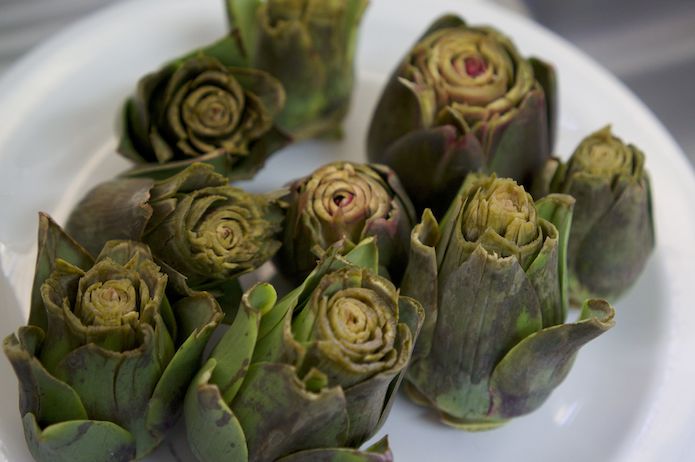
Artichokes freshly picked and soaked in acidified water
While the artichokes are soaking, Nonna prepares the stuffing mixture, which consists of lean beef mince, garlic, parsley, lots of Pecorino Romano cheese, some salt, and a good handful of breadcrumbs. Don’t ask me how much of each ingredient, because nothing is measured in this kitchen. If I even attempt to ask how much parsley or cheese she uses, she will say un pochino di questo e un pochino di quello (a bit of this and a bit of that). Unfortunately I never learned in the chemistry labs at university exactly how much “a bit” is. I do however know that she used 500g of beef mince (only because I bought it for her). Next she adds two eggs, which of course also came from the backyard, and a good splash of olive oil to moisten the mixture.

Adding some eggs and a splash of olive oil to the stuffing mixture
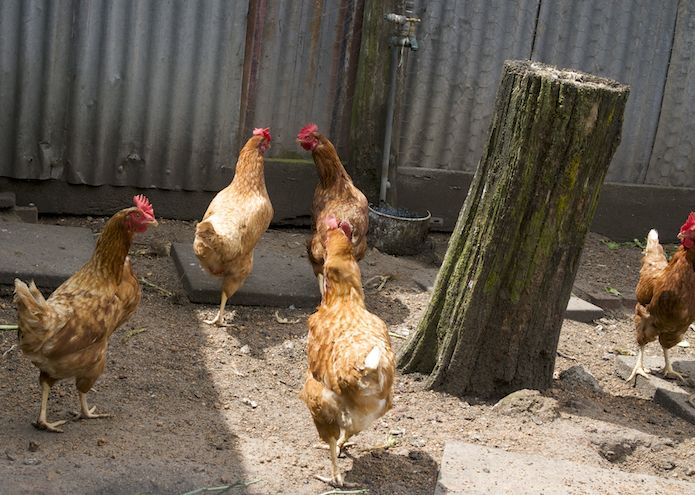
The chooks hanging around, after so kindly giving us the eggs
Everything is thoroughly mixed with the hands, adding additional breadcrumbs and oil where necessary. Given the lack of any measurement, the only thing we can do it taste the mince mixture and adjust the seasoning as required. Once it has a nice firm yet workable consistency, Nonna starts peeling back the leaves of each artichoke and stuffing every crevice with the mixture.
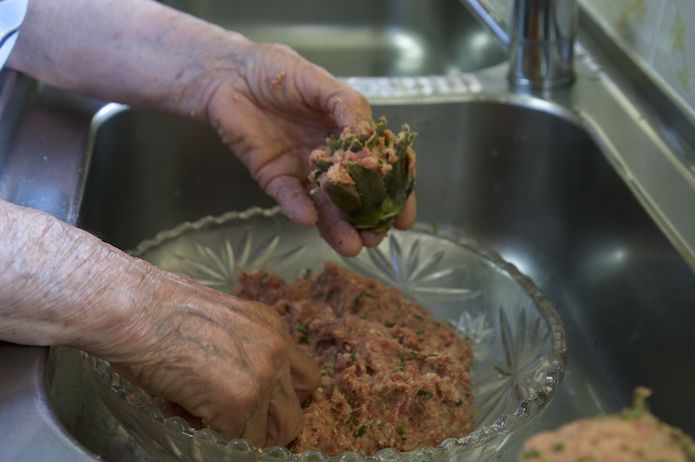
The artichokes are stuffed with the meat mixture, being careful not to leave any gaps
While we are doing this, she is telling me stories about when she was a little girl back in Italy, and how her mother would prepare these same artichokes for her, as would other mothers for their children. Since leaving her home town in Calabria, she has only ever returned a handful of times to visit her family. After all these years, I am glad that she has been able to maintain a sense of the tradition and culture of her earlier life. We continue stuffing the artichokes, and after twenty minutes of intense work, they are finally all filled to the brim with the tasty stuffing mixture and ready to be cooked.
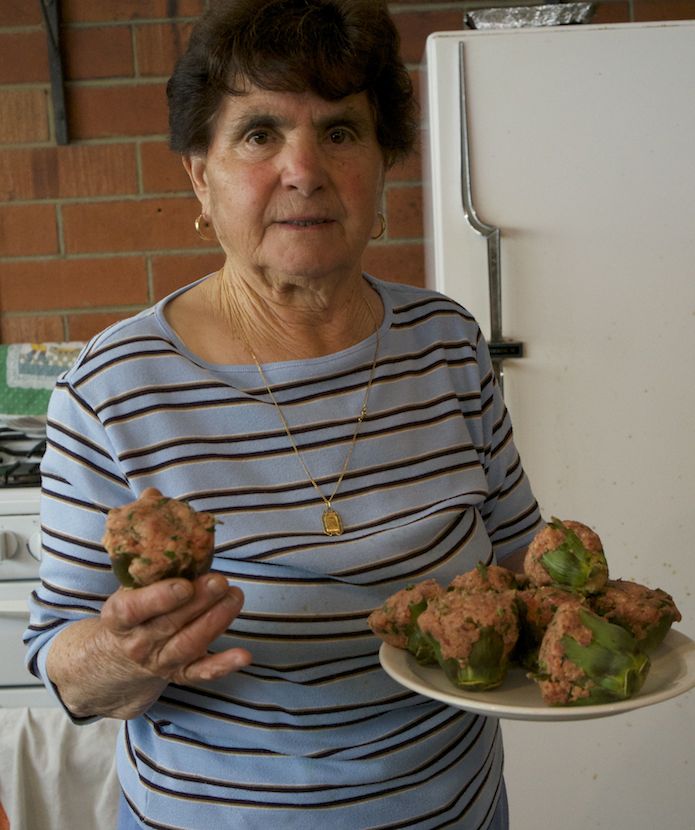
Nonna wielding the raw artichokes. She is explaining to me what the next step is.
One thing about some Italian families is that one kitchen is not enough. If I have learned anything about Nonna over the years, it is that when she tells us she will cook a few dishes for dinner, what she really means is that she is cooking twelve different dishes, and cooking twelve different dishes requires at least two kitchens. The same concept applies to almost everything else–I visit her and ask if I can have two eggs for my breakfast, and I’ll walk away with 10 eggs. Or if I need to borrow just one cup of sugar, I’ll get the whole packet. After having stuffed the artichokes, we head to the second kitchen to start cooking them. She starts by giving each artichoke a good coat of breadcrumbs.
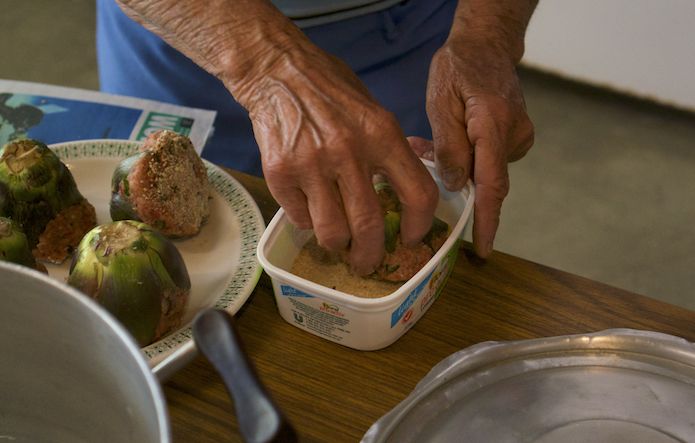
The artichokes are rolled in a bed of breadcrumbs
See that margarine container? Another thing that seems to be universally true among Italian grandmothers is that once a margarine container is emptied, it will end up either in the fridge or garage containing something else. If I go to the fridge and open a margarine container, I expect to find olives, or cheese, or tomato sauce, or maybe dried beans, but certainly not margarine. In fact, if I opened the container and actually found margarine, I’d be pretty surprised. Who needs to buy Tupperware when you can use recycled margarine containers?
Once they have all been rolled in the breadcrumbs, they are gently fried in a pan of hot oil. This helps brown the meat and give them a nice flavour.
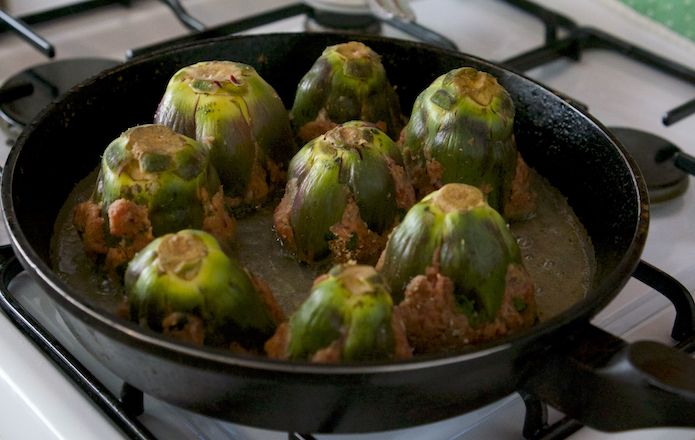
The artichokes are lightly fried in olive oil
Next is the tomato sugo in which the artichokes will later be cooked. Nonna has a jar of tomato sauce that she had made earlier in the year and stored away in the cellar. It is basically just a jar of ripe tomatoes that have been processed and cooked, so it really isn’t all that different from the pomodoro passata that can be found in any supermarket these days. One whole onion is roughly chopped and fried in a little oil, followed by the addition of a jar of the tomatoes. The sauce is brought to the boil and the artichokes added. Nonna covers the pot and lowers the heat so that the sauce is barely simmering. Now we wait.
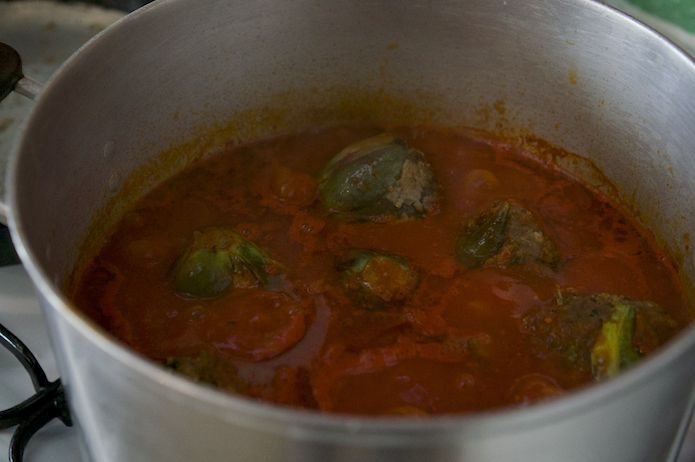
The artichokes are cooked gently in the tomato sauce
While we waited for the carciofi to cook, we went back to kitchen number one to use the leftover meat mixture. Whenever there is extra, Nonna uses it to stuff other vegetables, like zucchini, eggplant and capsicum, which can then be cooked in much of the same way as the artichokes. The artichokes will be plenty for tonight’s dinner, so she puts the stuffed capsicums in the fridge for tomorrow.
After about 40 minutes of cooking on a gentle heat, the carciofi are just about ready. Being gentle not to break them, she places them into a glass bowl, along with much of the sauce in which they were cooked. The artichokes make a great meal when eaten alone, but an even better meal when served with pasta dressed in the sauce. They sure aren’t the most elegant looking things, and will probably never appear on the menu of a Michelin starred restaurant, but they are homely and full of flavour.
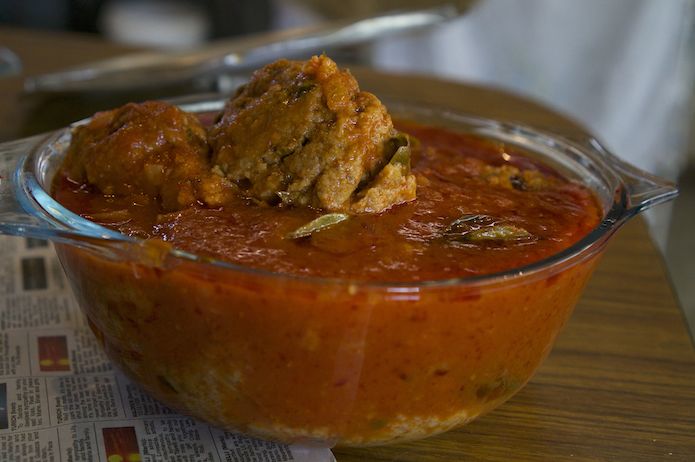
The carciofi ripieni are cooked and ready for eating
Carciofi ripieni are just one of the many dishes that I have been lucky enough to eat on a regular basis. They are a little time consuming, so probably not ideal for a quick weeknight meal, but they are a great way to use fresh artichokes for a meal that certainly does not lack flavour. Unfortunately the artichoke season is coming to an end, so I’ll have to wait another year for the next crop.

Wonder if the Artichokes is one kind of rose? As they really look similar like roses
They are a flower, but I don’t think they are related to roses. I’m not a botanist though, so who knows? They taste better than roses though
They taste better than roses though 